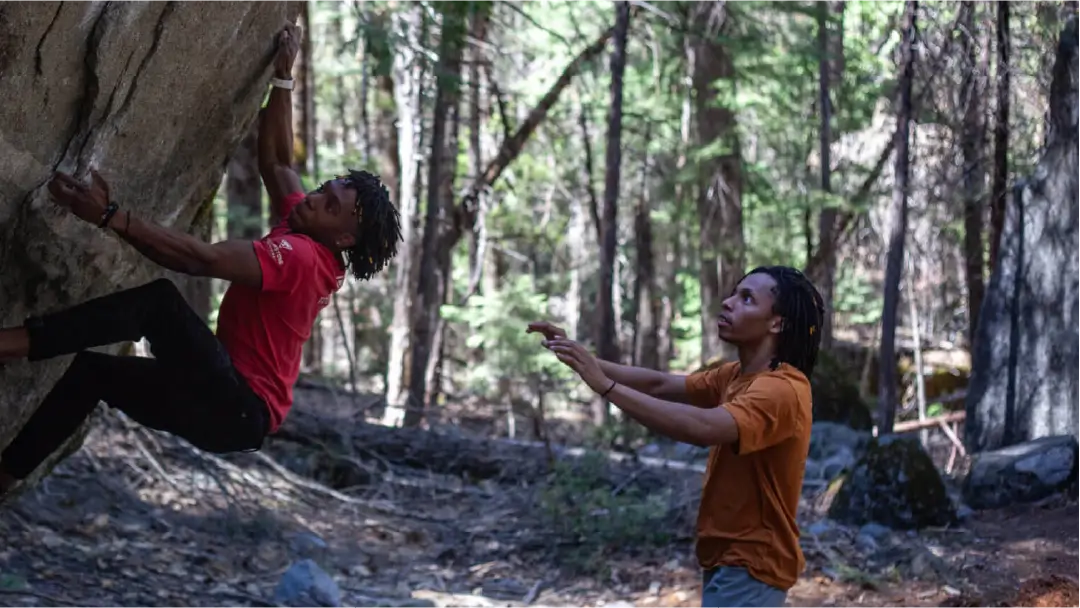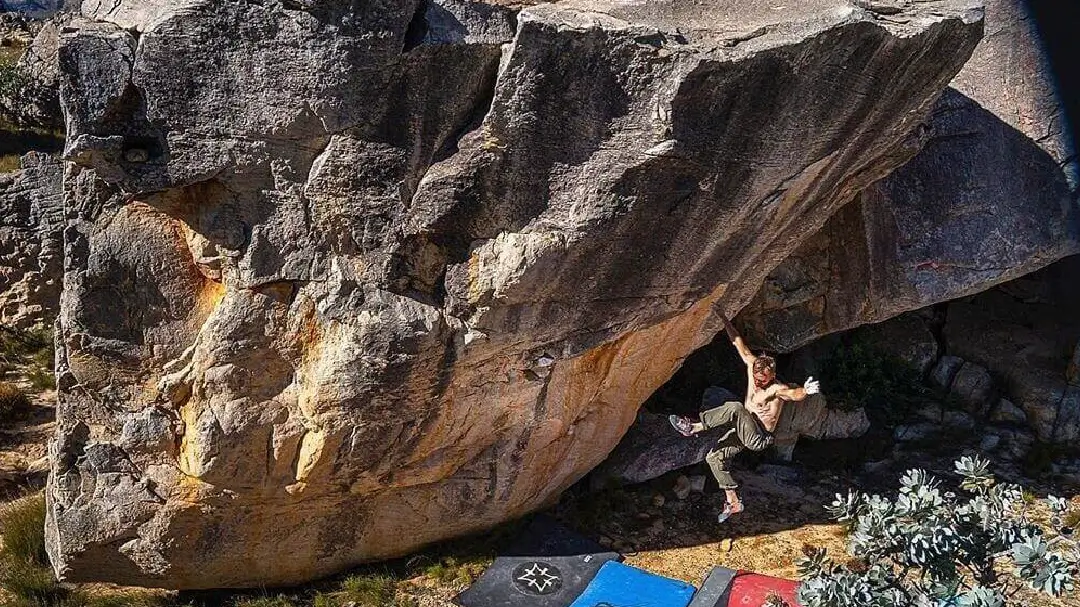Falling is an inevitable part of bouldering—but knowing how to fall properly is what keeps climbers coming back for more. Whether you’re projecting highballs or pulling onto a warm-up block, how you fall can be the difference between walking away laughing or limping back to the car.
Falling isn’t just about luck. It’s a practiced skill that every boulderer should develop. In this post, we’ll break down how to fall properly, the role of spotting, and how to place crash pads effectively to help keep you and your crew safer outdoors.
Bouldering is inherently dangerous. While these are tips that can help reduce your risk, there is always a possibility that injury can occur while bouldering.
Why Learning to Fall Matters
Bouldering inherently involves failure, and falling well is one of the most essential safety skills you can learn. According to REI Co-op’s expert advice, falling with control, rather than flailing, significantly reduces the risk of injury. Practicing this skill—both indoors and out—should be part of your regular climbing routine.
When you fall properly, you:
- Minimize impact on your joints
- Avoid dangerous landings like on your tailbone or straight legs
- Reduce chances of ankle sprains, wrist breaks, and head knocks
How to Fall: Best Practices
Here’s a breakdown of solid falling technique for outdoor bouldering:
- Stay loose but in control: Try not to stiffen up in the air.
- Land on your feet with bent knees: Absorb the impact with your legs.
- Roll onto your butt and back: Immediately roll to distribute the force. This is often referred to as a “back roll.”
- Don’t reach out with your arms: Trying to catch yourself can lead to wrist, arm, or elbow injuries.
- Look where you’re going: Awareness during the fall helps you adjust mid-air if needed.
- Visualize the fall: Envision how you might fall on a specific move or crux of the climb; this can help you anticipate how you’ll react and where you want your spotter to be, and where on the ground you may fall.
You can practice falls from a moderate height in a gym setting or on lowball boulders to get used to it. As Climbing Magazine notes, “Falling well is a skill like any other and should be practiced deliberately.”

Spotting: Your Partner in Safety
Spotting isn’t about catching someone mid-air—it’s about guiding them to the pad and helping protect the head and upper body. Here’s how to be a good spotter:
- Keep your hands up and elbows slightly bent
- Watch the climber’s hips and center of gravity
- Guide—not grab: Push them upright and toward the pads if they fall off balance
- Communicate: Ask the climber where the crux is, what kind of fall to expect, and when they want a spot
Good spotting is especially important during top-outs, overhangs, or when there are uneven landings. If you’re new to spotting, watch experienced climbers and ask questions. Learn more by reading our post on spotting.
Crash Pad Placement: Don’t Just Drop and Go
Having enough pads is only half the equation. You need to place them wisely and with care for the environment.
Here’s what to keep in mind:
- Cover the fall zone: Make sure pads cover the area where a climber is most likely to fall—not just where they start.
- No pad gaps: Avoid ankle-trap gaps by either locking pads together or overlapping them slightly.
- Don’t stack haphazardly: If you must stack pads, ensure the base layer is flat. Uneven stacks can cause ankle rolls.
- Move pads as needed: If the climber is moving left or right, shift the pads below them during rests or pauses.
- Avoid placing pads on plants: Respect the natural environment by not crushing vegetation or disturbing microhabitats.
- Don’t drag pads: This can cause trail erosion. Pick them up between moves.
For more advice, check out our post on how many crash pads you really need.
Final Thoughts: Responsibility Starts With You
Even with good pads, a great spotter, and perfect technique, falls still carry risk. That’s why it’s critical to:
- Speak up if you want pads moved
- Ask for a spot when you need one
- Know your limit and downclimb when unsure
- Stay present and aware, especially on unfamiliar boulders
Being responsible for your own safety makes you a better climber and a better partner. At Flashed, we believe that climbing responsibly is one of the best ways to protect not only yourself, but also the culture and integrity of our sport.
Need more pads for your crew or a better way to cover a sketchy landing?
Check out our crash pad collection designed for real-world fall zones—engineered by climbers, for climbers.


